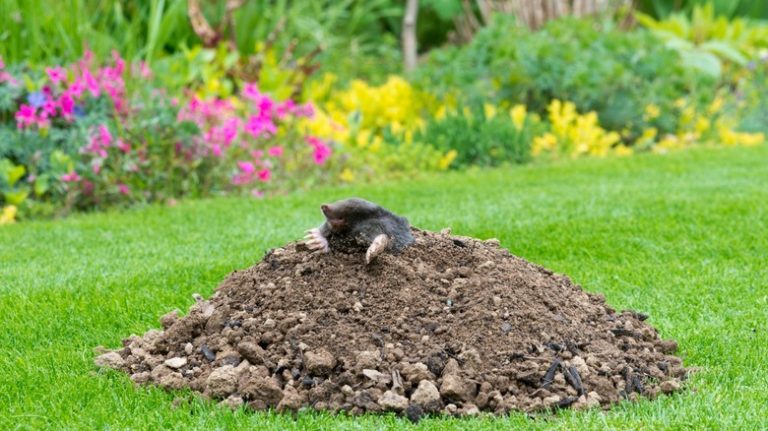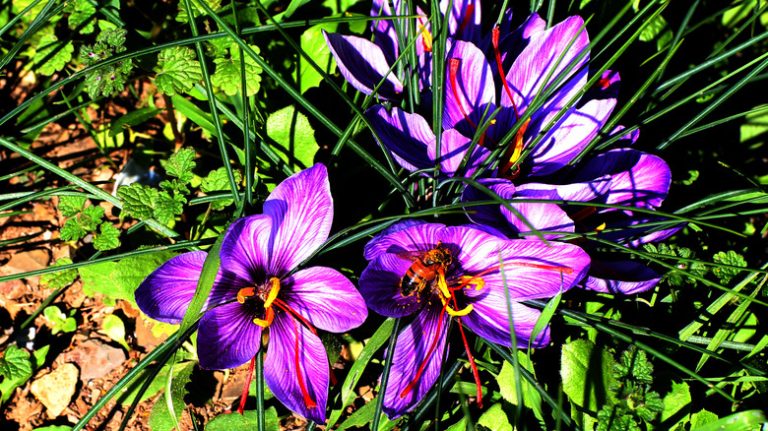When it comes to maintaining a beautiful garden, there is enough to ensure that your plants and flowers bloom to their full potential. Whether you’re a beginner or an experienced gardener, it’s always a good idea to have a guide on hand to help you navigate through the seasons and care for your greenery. One common error that many gardeners encounter is the 403 error, which can be particularly frustrating when you’re trying to access important gardening resources.
Although dahlias and peonies are known for their stunning blooms, roses have their own range of beautiful flowers that can bring color and life to your garden. It’s important to regularly prune and care for your roses to ensure that they stay healthy and continue to produce vibrant blooms. When maintaining roses, it’s best to use sterilized scissors or pruners to remove any dead or diseased leaves and flowers. This not only helps with the overall appearance of the plant, but also encourages new growth and prevents the spread of disease.
When it comes to the aftercare of your roses, it’s important to note that some flowers may wither and die after they bloom. However, the plant itself will continue to grow and produce new blooms throughout the season. To promote healthier growth and more flowers, it’s necessary to provide support for the branches and remove any unwanted ones. Regularly applying balanced fertilizer will also help to ensure that your roses have enough nutrients to thrive.
If you’re looking to learn more about maintaining your roses or other plants, there are a range of resources available to guide you. From books and online articles to gardening classes and workshops, there is always something new to discover. The focus of your efforts should be on creating a balanced and healthy environment for your plants to grow and reproduce. With a little bit of care and attention, you can enjoy a garden filled with beautiful blooms all year round.
10 plants to deadhead
Deadheading is an essential practice for maintaining the health and appearance of your plants. By removing the faded flowers, you are helping the plant to redirect its energy towards producing stronger, healthier blooms. Here are 10 plants that you should deadhead regularly:
- Hebe: Deadhead hebe regularly to promote new growth and keep the plant looking its best.
- Agapanthus: Remove the withered flower heads to prevent the plant from self-seeding and to encourage future blooms.
- Buddleia: Deadheading buddleia not only keeps the plant looking tidy but also helps it to produce more flowers throughout the season.
- Camellia: Correctly timing deadheading camellia flowers is necessary to avoid affecting the following year’s display.
- Peony: Deadhead peonies once the blooms have faded to keep the plant healthy and prevent the production of seed heads.
- Herbaceous perennials: Regularly deadheading herbaceous perennials promotes continuous blooming and prevents them from looking messy.
- Crocus: Remove the wilted heads of crocus flowers to encourage bulb growth and a better display next season.
- Landscape roses: Deadheading landscape roses helps them to produce more blooms and maintain a tidy appearance.
- Salvia: Deadheading salvias encourages new growth and prevents the plant from self-seeding excessively.
- Hydrangea: Deadhead faded hydrangea blooms to keep the plant looking neat and to promote new growth.
Remember to use sharp shears or scissors to deadhead the plants. Identify the faded or wilted flowers and remove them by cutting the stem just above a leaf node or bud. Ensure that your tools are clean and balanced to avoid any unnecessary damage to the plant. By following this practice, you’ll have a garden full of beautiful, healthy blooms all season long!
Camellia
Camellias are beautiful flowering plants that can provide a fresh burst of color to any garden. They are known for their stunning blooms and shiny, evergreen leaves. If you’re looking to improve your garden’s aesthetic, camellias can be a great addition.
When it comes to caring for camellias, proper pruning is essential. To keep your camellia plants healthy and encourage new growth, it’s important to prune them correctly. Use sharp pruners or scissors to cut off any dead or wilted blooms. This will divert the plant’s energy to producing new blooms and keep your camellias looking their best.
One of the benefits of leaving the faded blooms on the plant is that they can produce seed pods. These seed pods can be collected and planted to grow new camellias in the future. However, if you want to prolong the blooming season and ensure that your camellias continue to produce new blooms, it’s best to remove the old flowers.
Applying a balanced fertilizer to your camellia plants can also help promote healthy growth and improve their overall appearance. Camellias prefer slightly acidic soil, so using a fertilizer specifically designed for acid-loving plants is recommended. Be sure to follow the instructions on the fertilizer package for the best results.
Camellias are relatively low-maintenance plants, but they do require regular care to thrive. Proper watering is essential, as camellias don’t like to have wet feet. Make sure to water deeply and allow the soil to dry out slightly between waterings.
When it comes to pests and diseases, camellias can be prone to fungal infections and aphid infestations. To prevent these issues, it’s important to regularly inspect your plants and take action if necessary. If you notice any signs of infection or pests, apply an appropriate treatment to keep your camellias healthy.
So, if you’re considering adding camellias to your garden, go ahead and give it a try. With the right care and attention, these beautiful plants can thrive and provide you with years of enjoyment. Whether you’re a seasoned gardener or just starting out, camellias are a great addition to any garden.
Hebe
Hebe is a popular perennial plant that is loved by gardeners for its sharp, colorful heads and its ability to bloom for most of the seasons. Deadheading hebe plants is a common practice to improve their future growth and prevent them from fading too soon. Deadheading involves removing the fading flowers from the plant, which allows new growth to take its place.
Once hebe plants are established in the garden, they require very little maintenance. Simply water them as necessary and deadhead them throughout the blooming season to keep them healthy and prevent them from spreading too much.
When deadheading hebes, it is important to use sterilized scissors or pruners to prevent any risks of introducing disease or damaging the plant. Start by cutting the stem just above the first set of healthy leaves, using a clean and sharp tool.
Deadheading not only helps in preventing the spread of seeds, but it also guides the plant’s energy towards producing more healthy petals and stems. It is an effort worth giving, as it ensures a beautiful and balanced landscape for the future.
If you’ve never deadheaded hebe plants before, you’ll soon find that it is a simple and easy task that can be done in just a few minutes per plant. Plus, the practice of deadheading can also be applied to other plants in your garden, such as daffodils, dahlias, and buddleia.
In conclusion, deadheading hebe plants is an absolutely essential task for any gardener looking to maintain the health and beauty of their plants. It prevents the fading of flowers, improves future growth, and keeps the plants in a balanced state. So, next time you see fading flowers on your hebe, make sure to grab your shears or scissors and start deadheading.
Peonies
Peonies are beautiful and popular plants, known for their large, showy blooms. To enjoy the best of these lovely flowers, it’s important to learn how to care for peonies properly.
The first step in maintaining healthy peonies is to ensure that you have the right tools. Pruners are necessary for cutting down dead or damaged stems and encouraging new growth. It’s also important to regularly clean your pruners to prevent the spread of fungal diseases.
When it comes to planting peonies, it’s absolutely crucial to choose the right location. Peonies prefer well-draining soil, so make sure to prepare the soil by removing any fallen debris or weeds. Additionally, planting peonies in an area with good air circulation helps prevent fungal diseases.
Peonies should be watered regularly, especially when they are in bloom. However, it’s important to water the plant deeply and allow the soil to dry out between waterings. This helps encourage a balanced moisture level and prevents over-watering, which can lead to root rot.
Aftercare is also important when it comes to peonies. Deadheading, or removing the spent blooms, encourages the plant to put its energy into new growth. It’s also a good idea to cut back the foliage after the first frost to prevent the spread of diseases.
While peonies are generally low-maintenance plants, there are a few pests and diseases to watch out. Aphids, leaf spot, and botrytis blight can all affect peonies if not properly managed. Regularly inspecting the plant and taking necessary measures can help prevent these issues.
In conclusion, peonies are beautiful and rewarding plants to grow in your garden. By following these care tips and providing the right conditions, you can enjoy their stunning blooms year after year.
Buddleja
Buddleja, commonly known as the butterfly bush, is a beautiful plant that adds a touch of color and life to any landscape. With its vibrant flowers and ability to attract butterflies, it is a popular choice among gardeners.
One of the main tasks associated with growing buddleja is deadheading. Deadheading is the practice of cutting off faded flowers to divert the plant’s energy towards future blooms. Although it may seem like a tedious task, deadheading helps to improve the plant’s overall appearance and extend its blooming season.
When deadheading buddleja, it is important to use clean and sterilized pruners. This helps prevent the spread of any diseases or pests that may be associated with the dead flowers. Additionally, cutting the stems back by a few inches removes the fading blooms and encourages the plant to produce new ones.
It is worth noting that not all buddleja varieties require deadheading. Some cultivars, such as the ‘Buzz’ series, are naturally sterile and do not produce seeds. This makes them a low-maintenance option for gardeners who want to enjoy the benefits of buddleja without the need for deadheading.
Even though buddleja is known for its attractive flowers, it is not the only plant that benefits from deadheading. Many perennials, like peonies and dahlias, also greatly benefit from this practice. Deadheading these plants improves their overall appearance and prevents the formation of seed heads, which can divert energy away from blooming.
In conclusion, deadheading buddleja and other flowering plants is often a necessary task for gardeners. It keeps the plants looking their best and helps them reproduce over time. While the process can be time-consuming, the benefits of extended blooming seasons and beautiful displays make it a worthwhile effort for any gardener.
| Benefits of deadheading |
|---|
| – Improves the overall appearance of the plant |
| – Extends the blooming season |
| – Prevents the formation of seed heads |
| – Encourages the plant to produce new blooms |

